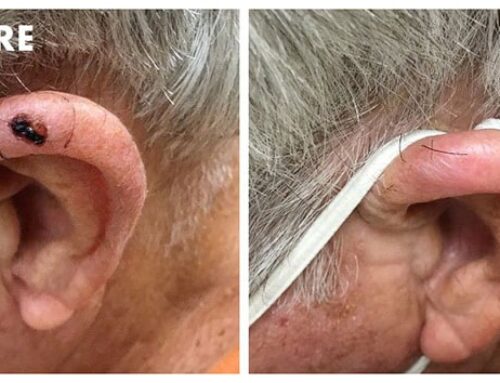Summary
Scalp micropigmentation (SMP) places tiny pigment dots in the upper dermis to mimic shaved follicles or reduce scalp show-through. It’s a non-surgical solution that’s useful for creating a shaved/buzz look, adding density to thinning hair, and camouflaging scars. Expect multiple sessions spaced weeks apart with long-lasting results that can fade over time, requiring occasional touch-ups. Not recommended if you’re prone to keloids.
Who is SMP For?
SMP serves multiple purposes and can benefit various types of hair loss situations. The treatment can create a clean, shaved “buzz” look that’s perfect for those who prefer a consistently short hair appearance. It eliminates the patchy look of natural balding patterns and provides the appearance of a full head of recently shaved hair.
For people with thinning hair, SMP adds the appearance of density by making sparse areas appear fuller when viewed from above. This reduces scalp visibility through existing hair and creates the illusion of thicker hair coverage without actually growing new hair.
SMP also excels at camouflaging hair transplant scars, including linear FUT (strip) scars and dot-like FUE transplant scars. This makes it an excellent complementary treatment for people who have undergone hair transplant procedures.
The ideal candidates include people who aren’t candidates for hair transplant surgery, those seeking a non-surgical styling solution, individuals who prefer the maintenance-free aspect of a shaved look, and anyone looking to improve their hairline definition.
How Does SMP Work?
The technique involves precise pigment placement that differs significantly from traditional tattooing. Pigment is placed in the upper dermis, much shallower than regular tattoos, which ensures dots appear as soft “5 o’clock shadow” rather than solid blobs. This shallow placement creates a natural-looking stubble effect when executed properly.
Quality and technique are crucial for natural results. Quality pigment selection ensures natural color matching and longevity, while skilled application makes the treatment look natural even under close inspection. Proper dot size and spacing mimics real hair follicles convincingly, but this requires working with experienced practitioners who understand hairline design and using pigments specifically formulated for scalp applications.
The best results require keeping the scalp shaved or very short for optimal blending. When maintained properly, high-quality SMP reads like natural stubble and can fool even close inspection.
How Many Sessions and How Long?
Most people require multiple treatment sessions to achieve optimal results. The standard approach involves 2-3+ sessions spaced weeks apart, with each session potentially lasting several hours depending on the coverage area being treated.
Multiple sessions work better than single long appointments because they allow gradual density building for natural-looking results and enable refinement of hairline design between visits. This approach also reduces trauma to the scalp compared to trying to complete everything in one session.
At Haber Dermatology specifically, sessions typically last 4-8 hours depending on the area being treated, with approximately 2 weeks between visits to allow skin to properly exfoliate. This spacing ensures optimal pigment retention and proper healing between treatments.
The gradual approach allows for adjustments and improvements while giving you time to assess results between treatments. This reduces the risk of over-pigmentation or creating an unnatural appearance.
Does SMP Fade?
Yes, SMP will fade over time, but understanding the factors helps you maintain results longer. There are two main types of fading to consider: external factors that you can control and natural processes that vary by individual.
External factors that accelerate fading include sun exposure, which breaks down pigments faster, and alcohol-containing products like hairspray or minoxidil foams. Early washing before proper healing occurs and hot saunas or steam in the first days after treatment can also cause premature fading. You can minimize this external fading by choosing high-quality pigments from reputable providers, working with skilled practitioners, protecting treated areas from UV exposure, and following all aftercare instructions carefully.
Natural fading occurs through normal biological processes. Normal skin exfoliation gradually removes pigment, and individual immune system responses vary significantly between people. Some naturally retain pigment longer than others based on their unique biology.
Long-term expectations are generally positive. Most patients at Haber Dermatology remain satisfied at 5 years without full touch-ups, though some request earlier refresh treatments for optimal appearance. A minority may need more frequent maintenance based on individual factors, but this varies considerably from person to person.
Can SMP Hide Hair Transplant Scars?
SMP can often disguise transplant scars effectively, but with important considerations. The treatment works well for light linear scars from FUT (strip) procedures and dot-like scars from FUE individual follicle extraction, as well as various types of scalp scarring from previous procedures.
The important limitation involves hair length strategy. If you cut hair too short, the step in contour from scar tissue can still show under certain lighting and angles. The texture differences between scar and normal skin may become apparent, particularly as hair grows longer.
Very short stubble around 1mm provides the best blending between the SMP and scar tissue. Shorter hair generally equals better scar camouflage with SMP, while longer hair may reveal the underlying differences in skin texture. This is why it’s crucial to work with your provider to determine optimal hair length for your specific situation.
Best results occur when scars are relatively light and not deeply indented, when you’re committed to maintaining appropriate hair length, and when treatment is performed by someone experienced with scar camouflage techniques.
What Should I Do After Treatment and What Should I Avoid?
Post-treatment care is straightforward since SMP doesn’t involve surgery or anesthesia. Most people return to daily activities quickly and can expect mild, short-lived redness that resolves within days. There are no surgical wounds or stitches to manage, making recovery much simpler than surgical alternatives.
The first few days require some precautions to ensure proper healing and optimal pigment retention. You should avoid getting the scalp wet until properly healed and skip heavy exercise that causes excessive sweating. Steam rooms and saunas should be avoided completely during this initial period, and direct sun exposure on treated areas should be limited. However, wearing hats is fine and actually recommended for sun protection.
Haber Dermatology provides specific guidelines that include no washing with soap or shampoo for the first 3 days, avoiding sauna and steam for the first 3 days minimum, and skipping alcohol-based hair products to reduce fading risk. Following up as scheduled ensures optimal results and allows for any necessary adjustments.
You can return to work and normal activities except for those specifically restricted, sleep normally without special positioning requirements, and maintain most of your regular routine during the healing process.
What Are the Risks and Who Should Avoid SMP?
Choosing the right provider minimizes risks, but some people should avoid SMP entirely. Potential risks include infection if proper sterile techniques aren’t followed, allergic reactions to pigments (though rare), unnatural appearance from poor technique or pigment selection, and color changes over time if low-quality pigments are used.
Risk reduction requires careful provider selection. You should choose licensed, experienced practitioners with proven track records, review before-and-after photos from multiple patients, verify proper sterilization procedures and equipment, and discuss pigment quality and expected longevity before proceeding.
People prone to keloids should avoid SMP because the procedure can trigger keloid formation. Others who should avoid treatment include those with active scalp conditions like severe dermatitis, individuals with unrealistic expectations about results, and anyone uncomfortable with permanent cosmetic procedures.
It’s important to remember that SMP is a permanent procedure that’s difficult to reverse, results depend heavily on practitioner skill and experience, and not all scalp conditions or scar types are suitable for treatment.
How Does SMP Compare to Other Hair Loss Options?
Understanding your alternatives helps make the best choice for your specific situation and lifestyle preferences.
Hair fibers and powders offer quick daily application but can be messy to use and are sensitive to sweat, rain, and physical activity. They require daily maintenance and reapplication, which can become tedious over time. SMP acts like “permanent concealer” without daily application, is weather and sweat resistant once healed, and provides consistent appearance regardless of activities.
Hair transplant surgery adds real, growing hair that can be styled and provides natural hair texture and movement while achieving longer hairstyles. However, SMP offers a non-surgical approach with minimal downtime, costs significantly less than transplant procedures, can be combined with transplant for enhanced density, and carries no risk of transplant complications.
A combination approach using both SMP and hair transplant can complement each other effectively. While not performed on the same day, they can be coordinated to create fuller appearance plus real hair texture for optimal results.
What Pro Tips Will Help You Get the Best Results?
Smart preparation leads to better outcomes and helps ensure you’re happy with your final results.
Before your consultation, bring reference photos showing your preferred hairline style and research shaved versus soft, natural hairlines to understand your options. Consider your facial structure and age for appropriate hairline design, as what works for one person may not suit another.
For scar camouflage specifically, discuss hair length strategy so contour changes don’t reveal scars, understand the trade-offs between hair length and scar visibility, and plan your ongoing hair maintenance routine before starting treatment.
Pigment selection requires wisdom beyond simple color matching. Ask about color matching strategy, as many experienced clinics don’t match your current hair color exactly to prevent clashing if your hair grays over time. Discuss how pigment will age and potentially change, and understand the long-term appearance implications.
Choosing the right provider involves reviewing extensive before-and-after portfolios, asking about training and experience with your specific needs, and understanding their approach to hairline design and pigment selection. Don’t rush this decision, as the provider’s skill significantly impacts your results.
How Do I Get Started with SMP?
Getting started with scalp micropigmentation begins with a thorough consultation where your provider will assess your scalp condition, hair loss pattern, and aesthetic goals. Together, you’ll develop a personalized treatment plan that considers your lifestyle, maintenance preferences, and desired appearance.
At Haber Dermatology, Dr. Robert Haber specializes in advanced scalp micropigmentation techniques, offering natural-looking results for hair loss, thinning hair, and scar camouflage. To schedule your consultation and learn if SMP is right for you, visit haberderm.com or call for an appointment.

Meet Robert Haber, MD, FISHRS
Dr. Haber is considered one of the finest hair transplant surgeons in the world, and lectures internationally each year. He also directs the region’s busiest private clinical trials unit studying new medications.
In 2023, Dr. Haber was the recipient of the prestigious Manfred Lucas Lifetime Achievement Award by the ISHRS, for his exceptional contributions and commitment to the field of hair transplantation. Only 15 other surgeons globally have ever received this honor.
The International Society of Hair Restoration Surgery (ISHRS) awarded Dr. Haber the coveted Golden Follicle Award in 2009 as one of the world’s top hair transplant surgeons, in recognition of his academic contributions and surgical skills.


